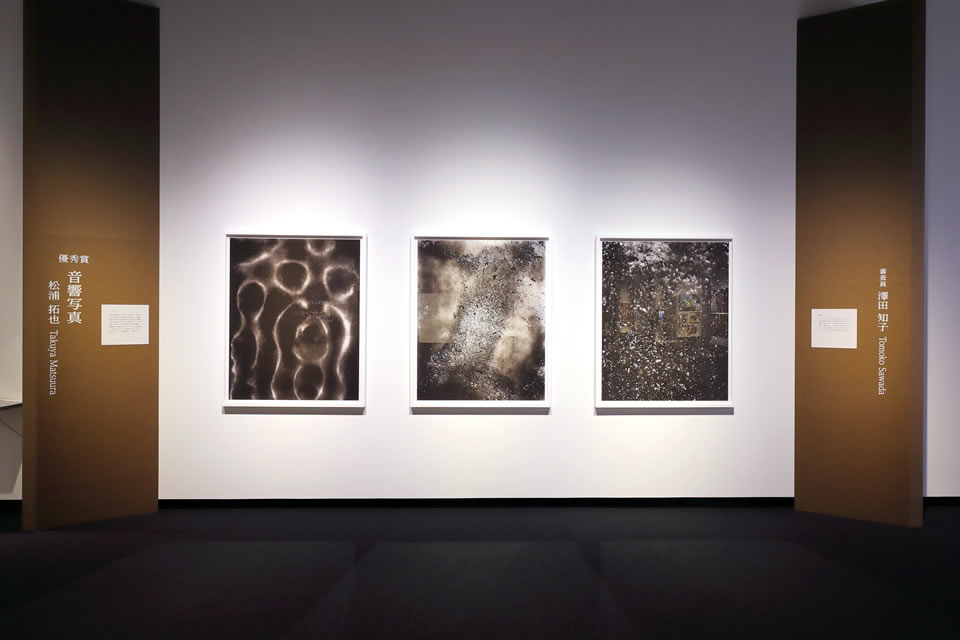PRESENTATION
I became familiar with cameras and began to think about them after entering an audiovisual arts-focused university. I was also interested in the relationship between visuals and sound and wondered if I could express the relationship with photography.
I then visited various places with a wish to photograph sound, taking a typically photographic approach in this context.
I took photos of horizontal lines as if sampling them. By putting these horizontal line photos together, I likened the resultant line to a time line that flows from left to right, and expressed it as a sequence of music. Please understand, however, that this work was an attempt to visualize images of sound that I had; I don’t mean I could record on the film the sound in its physical sense. I created the works using “physical” as a keyword.
The techniques I focused on to create the works were photograms whereby the object is directly placed on a photographic paper and exposed to light without the use of a camera.
The process of a photogram is as follows: get a speaker, a silver-plated sheet and a sheet of photographic paper; sprinkle a fluid (sugar) all over the photographic paper set on the silver-plated sheet; after setting the enlarger’s stop and exposure time, output sine waves and transmit sound to the silver-plated sheet, the photographic paper and the fluid; geometric patterns appear and change according to the sound’s frequency range, throughout which time exposure continues and fixes the fluid’s movements onto the photographic paper.
While working alone in a fully anechoic darkroom, I sometimes forget I’m standing face-to-face with the object – the feeling I usually get when photographing an object with a camera. This is perhaps because, while engaging in the work, I am deprived of the sense of vision and instead totally depend on hearing in spite of photography being a form of visual expression. I noticed this when I confirmed the image by digitally scanning the completed negative. There I found a world I had never seen before. To me, it was nothing less than the moment of successfully fixing invisible sound as an image on a photograph.


How did you choose the sounds? Please also tell me about how you chose the method to generate the sounds.
(Matsuura)
I got sounds that I could change frequencies. I also used sine waves intentionally because I didn’t want the sounds to have special meanings.

Selector’s Comment & Questions and Answers
Tomoko Sawada
What differentiated your work from the many works submitted in digital form was that yours was full of analogue feeling. It is a photograph and yet is not bound by stereotyped photographic expressions. I found your approach toward creation having much in common with mine.
I also knew that your work was a hard-earned series completed after trials and errors.
What also interested me was the fact that your work could not be visualized in the process of creation but be seen only after completion.
You scanned the films and outputted them using an inkjet printer. Why did you choose such a method?
(Matsuura)
I thought I should output them in as large sizes as possible because I was afraid small particles forming the images might be lost if outputted in small sizes. To tell the truth, I wanted to use a large-size photographic paper roll if I could get it, but I couldn’t. That’s why I used the inkjet printer to output them.